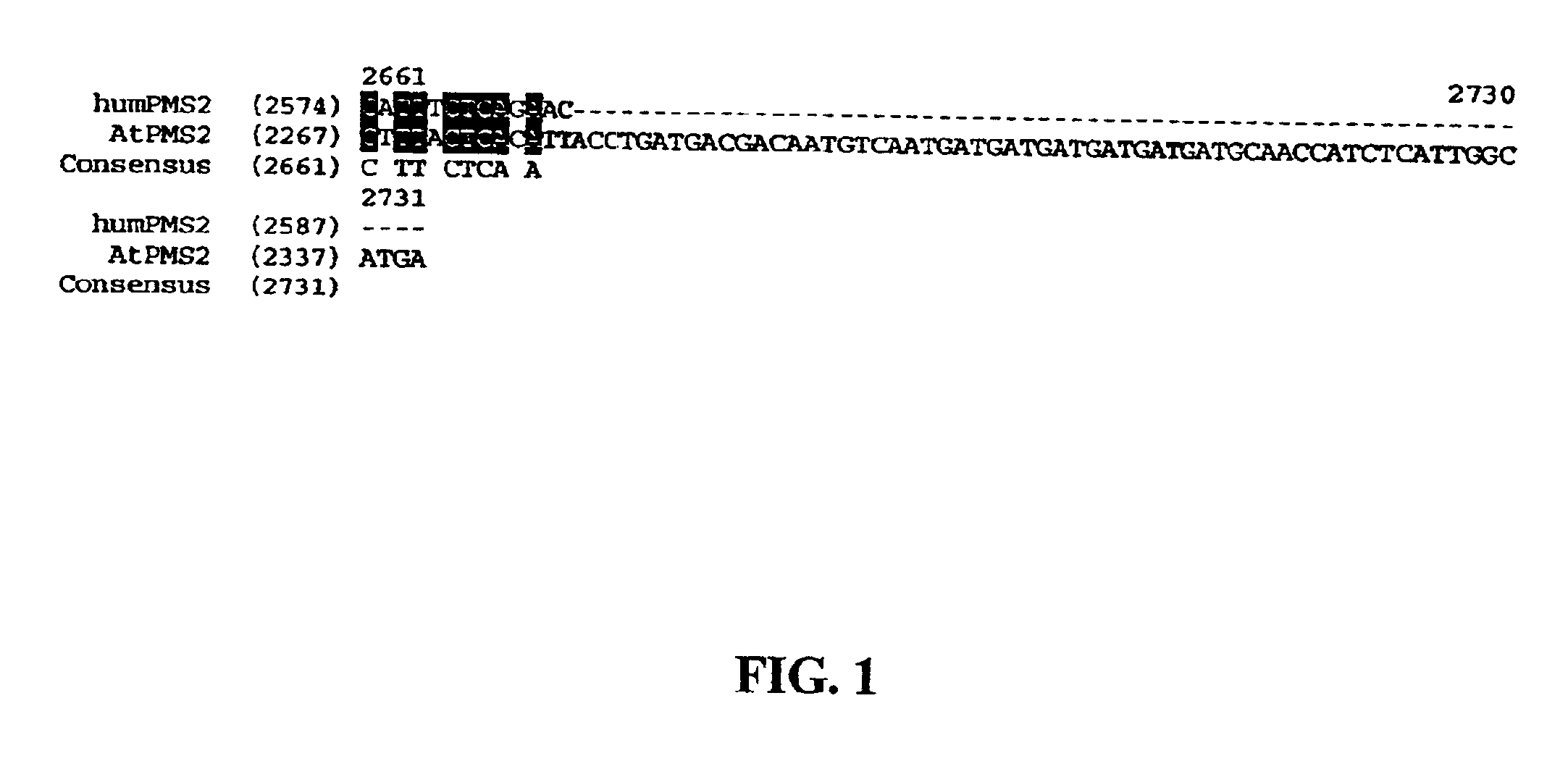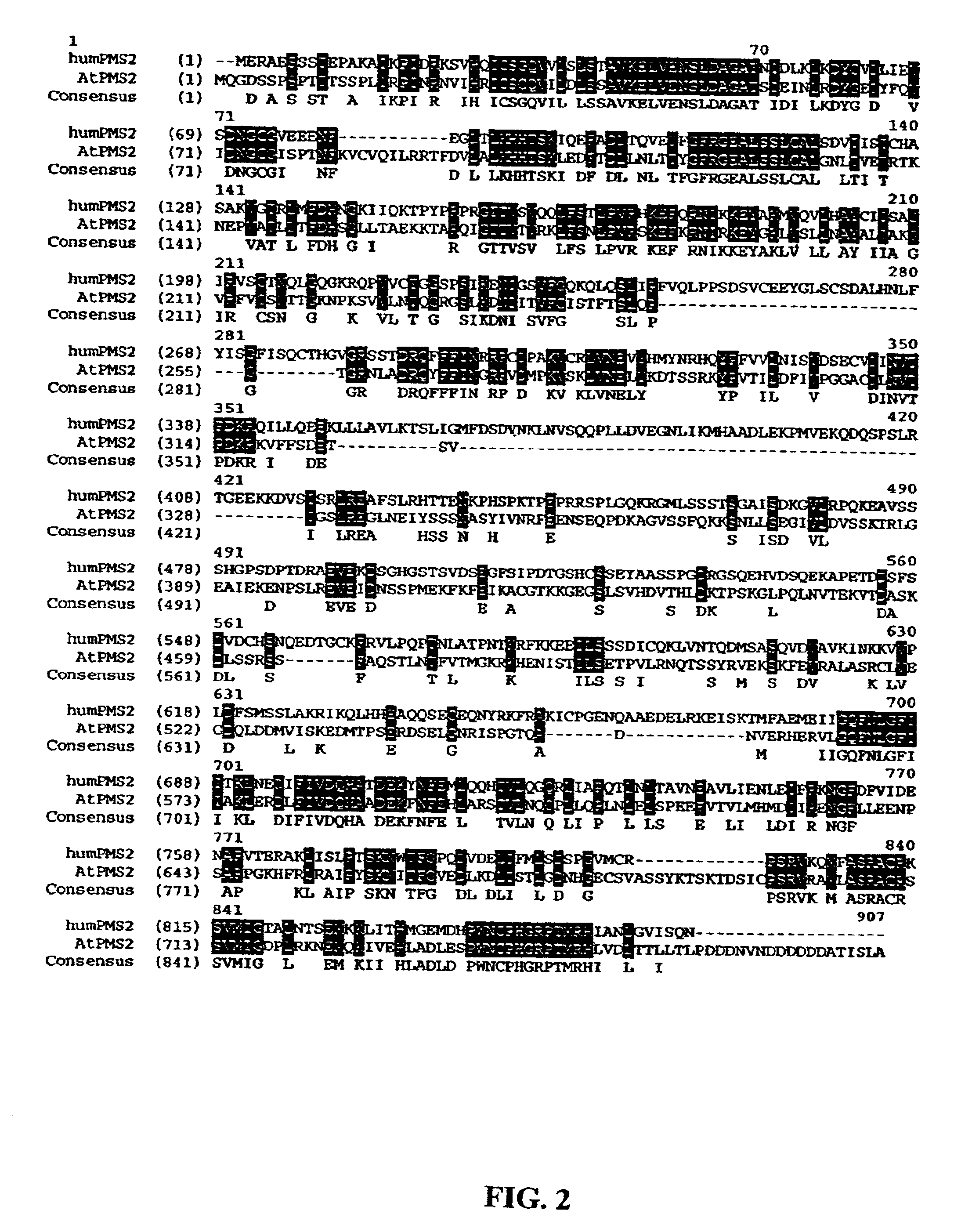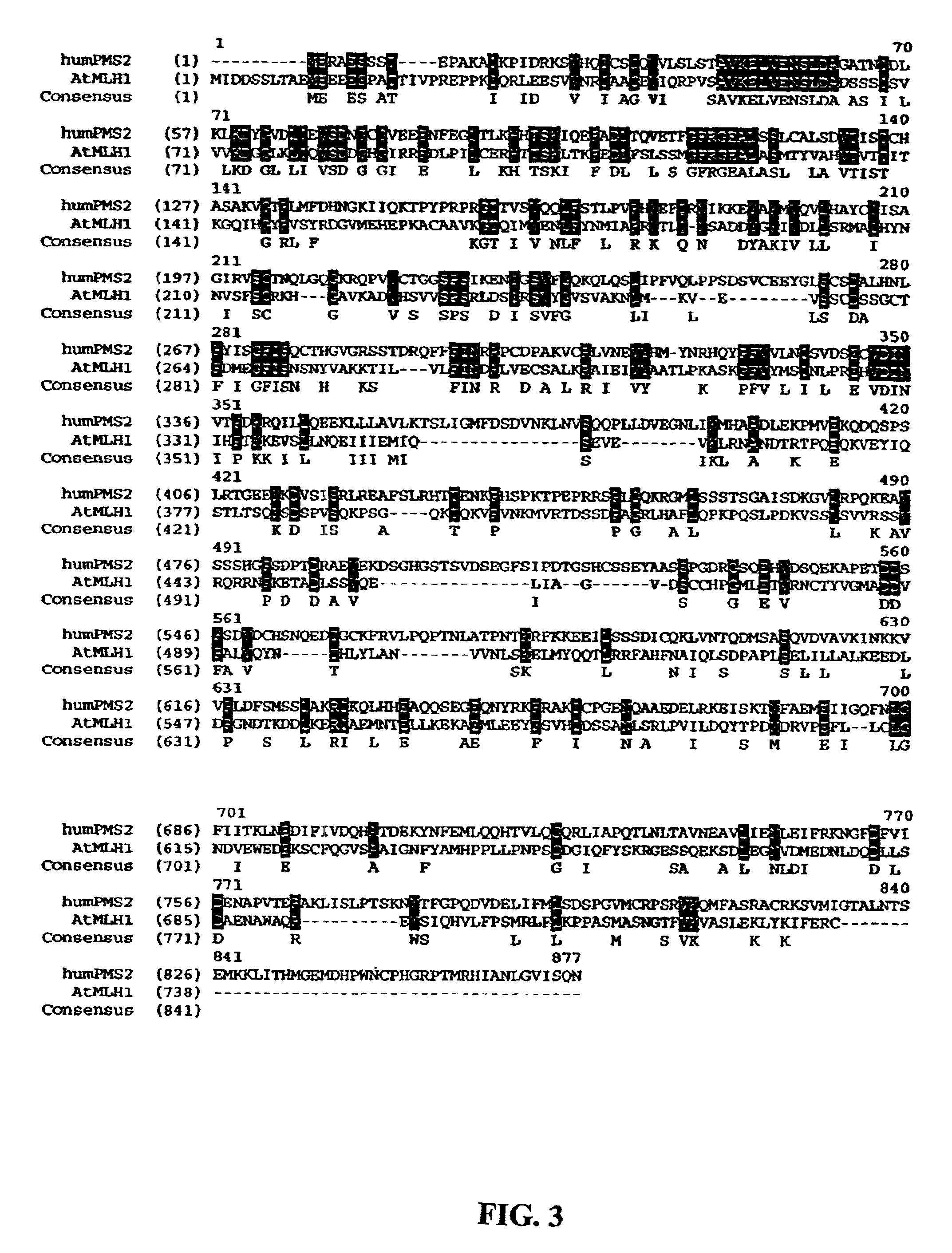Method for generating hypermutable plants
a technology of hypermutable plants and plants, applied in the field of mutagenesis, can solve problems such as mmr activity-wide defects
- Summary
- Abstract
- Description
- Claims
- Application Information
AI Technical Summary
Benefits of technology
Problems solved by technology
Method used
Image
Examples
example 1
Isolation of Plant Mismatch Repair Genes.
[0058]The ability to increase the hypermutability of host genomes has many commercial and medical applications. The generation of hypermutable plants such as those used in agriculture for livestock feed and human consumption are just one example of many types of applications that can be generated by creating hypermutable organisms. For instance, the creation of crops that are less susceptible to pests or soil pH would greatly increase yield of certain agricultural crops. In addition to greater production of goods, improved crops could increase the ability to grow many generations of crops on the same fields (25-27). Moreover, the ability to affect certain growth traits such as natural pest-resistance, drought-resistance, frost-resistance, increased production, or altered stalk size has many benefits for the production of agricultural products. Recently, it has been demonstrated that genes affecting the biologic activity of the plant growth ho...
example 2
Generation of Dominant Negative Alleles of Plant Mismatch Repair Genes.
[0064]To demonstrate that putative plant MMR proteins are truly involved in MMR biochemical process, cDNAs are cloned into constitutive (31,32) or inducible (33) bacterial expression vectors for functional studies. Various deletion mutants are generated to produce dominant negative MMR genes. Dominant negative alleles that are identified in the bacterial system are then useful for plant studies. Dominant negative MMR genes are prepared by over-expression of full-length MMR genes or by deletion analysis using standard protocols used by those skilled in the art of molecular biology. One such dominant MMR gene mutant was created by generating a construct with similar domains to that of the human dominant negative PMS2 gene (referred to as PMS134) (13, U.S. Pat. No. 6,146,894). To generate this vector, the ATPMS2 (SEQ ID NO: 4) and hPMS2 cDNA (SEQ ID NO: 3) sequences were aligned and the conserved domain was isolated...
example 3
Inhibition of Plant MMR Activity by Dominant Negative MMR Alleles Produces Genetic Hypermutability and Microsatellite Instability.
[0067]Dominant negative alleles of human and AT MMR genes identified using bacterial and or mammalian systems can be used for plants. To test the hypothesis that dominant negative MMR gene alleles produce global hypermutability in plants, the hPMS134 and ATPMS134 cDNAs were expressed in plants. These alleles have been found to work across species where the introduction of these genes into MMR proficient bacterial or mammalian cells renders the cells MMR deficient. Assays to carry out these studies are described below.
Engineering Plant Expression Vectors to Express the PMS134 Dominant Negative Alleles.
[0068]A BamH I fragment containing the hPMS134 cDNA was obtained from the pSG5PMS134 plasmid (ref 13) and cloned into the corresponding sites of the pEF 1 / SP1-V5 vector (InVitrogen). The resulting vector (pEF-PMS134-sense) was then digested with Pme I to rele...
PUM
| Property | Measurement | Unit |
|---|---|---|
| pH | aaaaa | aaaaa |
| pH | aaaaa | aaaaa |
| time | aaaaa | aaaaa |
Abstract
Description
Claims
Application Information
 Login to View More
Login to View More - R&D
- Intellectual Property
- Life Sciences
- Materials
- Tech Scout
- Unparalleled Data Quality
- Higher Quality Content
- 60% Fewer Hallucinations
Browse by: Latest US Patents, China's latest patents, Technical Efficacy Thesaurus, Application Domain, Technology Topic, Popular Technical Reports.
© 2025 PatSnap. All rights reserved.Legal|Privacy policy|Modern Slavery Act Transparency Statement|Sitemap|About US| Contact US: help@patsnap.com



